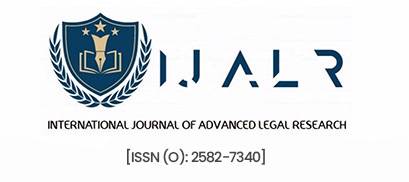Abstract
The rapid augmentation of AI is a strategic need across various dominions such as healthcare, finance, manufacturing and law, the need for ethical benchmark, liability and human oversight has never been more pivotal. Human oversight has evolved to monitor system accuracy, transparency, cyber vulnerabilities and bias, fostering trust in technology, a reminder that machines, no matter how intricate, are born without emotional quotient that structure’s society. The architects of these systems must anticipate that AI drifts into leeway’s of unchecked autonomy with their own limitations, for which accountability should be a forethought.
The key issue that this research paper addresses is that many oversight frameworks rely on post-hoc accountability, i.e, intervening only after harm has been done rather than ensuring meaningful human control throughout the AI lifecycle. Additionally, existing approaches often include human oversight in a superficial way, without providing individuals with the authority or tools necessary to intervene effectively.
To address this gap, the study employs a multimethodology approach, combining a literature review and case analyses of AI-related failures. It further incorporates researcher analysis to propose a governance model that strengthens proactive human oversight. It emphasizes a clearly defined responsibility structures, enhanced transparency in AI decision-making, directs the question of whether legal frameworks have progressed to accord AI infusion in search results and digital narratives which impacts public perception and mechanisms that enable human intervention before harm occurs.
By emphasizing proactive oversight instead of reactive responses, this research offers a structure for ensuring AI systems align with moral and legal standards. Ultimately, this paper seeks to bridge the intersections of technology, ethics, and law by proposing interdisciplinary frameworks that enhances accountability and societal alignment. The findings assist in the current discourse on governance of AI, highlighting the necessity of oversight structures that are both practical and enforceable.
Keywords: Accountability, AI, Law, Objectives, Regulations & Technology.
Introduction
The rapid augmentation of AI is a strategic need across various dominions such as healthcare, finance, manufacturing and law, the need for ethical benchmark, liability and human oversight has never been more pivotal. This is because AI, while powerful in data analysis, lacks inherent ethical understanding and can potentially perpetuate biases or generate harmful outcomes if not carefully monitored and controlled by humans. “Human accountability and oversight in AI systems” refer to the active and intentional use of human judgment in the design, deployment, and operation of artificial intelligence. This approach ensures that AI technologies are aligned with human values, reduce possible risks, and set clear lines of responsibility in the case of unforeseen consequences. A 2024 report from Aporia found that nearly 89% of engineers working with AI systems like large language models have run into a common issue called “hallucinations,” in which inaccurate or unnecessary information is produced by the model. When these mistakes occur in regular life, it may merely just be bothersome, but in professions where accuracy is crucial, such as healthcare or law, they pose a serious risk. AI is a tool that develops understanding based on the data provided. If the material its acquiring knowledge from is faulty, prejudiced or inadequate, the results will also mirror the same issues. Human oversight plays an important role in the situation. AI models are sometimes criticized for being a “black box” which means that users can’t seem to fully understand or explain the process that produced a result.
It becomes exceedingly difficult to assign blame and hold people accountable for negative results if AI decision-making cannot be comprehended or explained. To avoid accountability, those involved should succeed in justifying that people can rely on the AI models they are creating or adopting.
It should be made possible for humans to supervise the systems, and individuals in charge of the different phases should be held responsible for the outcomes. This idea seeks to recognize the accountability of the relevant companies and individuals for the results of AI systems. Even if the negative effect is accidental, the designers, developers, and persons who put the model into use should be made liable for any possible harm it may cause to people or communities. For relevant national and international liability mechanisms to work effectively, transparency plays a major role.
By upholding these values, human supervision promotes ethical coherence, trust, and the responsible creation of AI systems. The designers must foresee that AI will venture into areas of unrestrained autonomy with innate restrictions, for responsibility should be acknowledged beforehand. This study examines the methods, difficulties, and moral issues associated with employing efficient human supervision to make sure that AI systems act responsibly and bear the brunt of their deeds.

